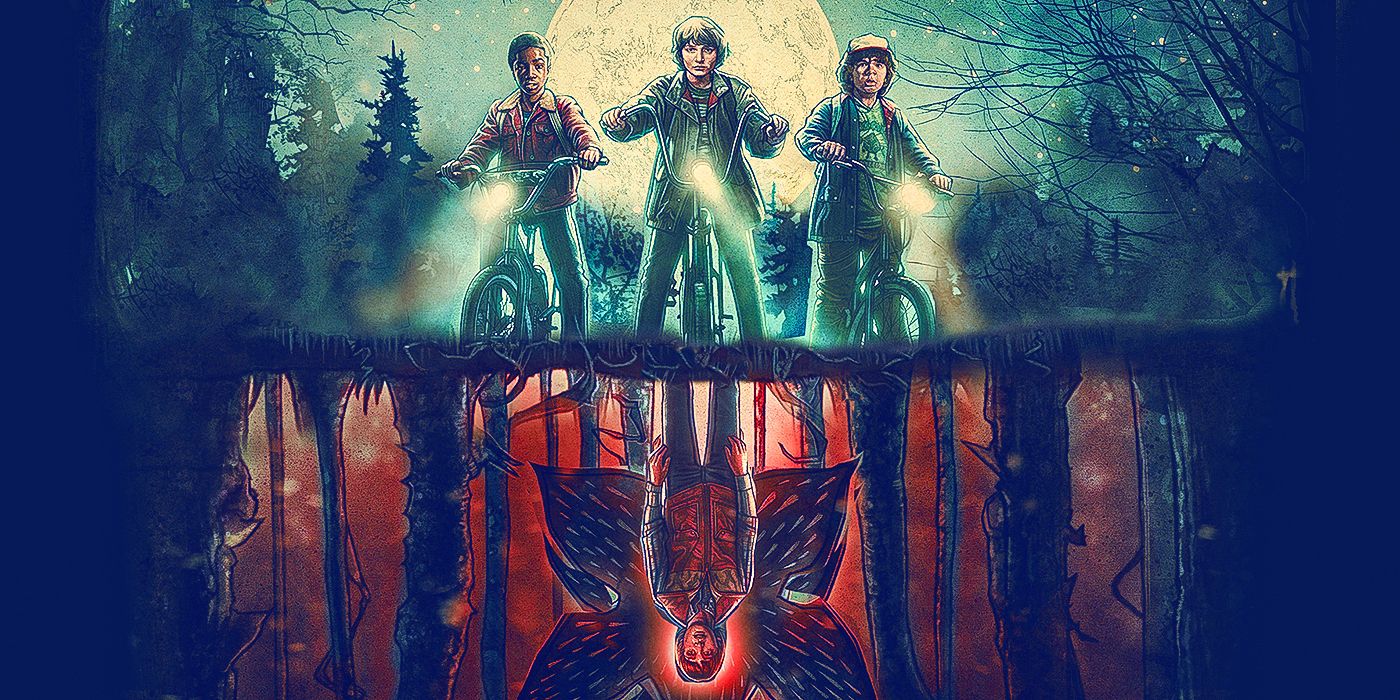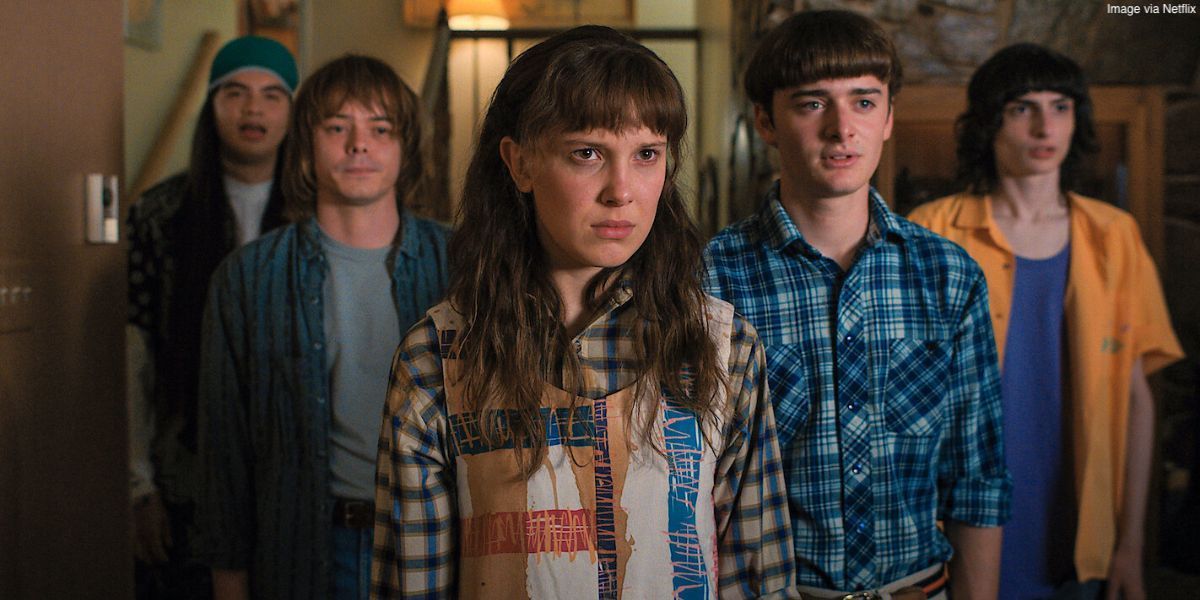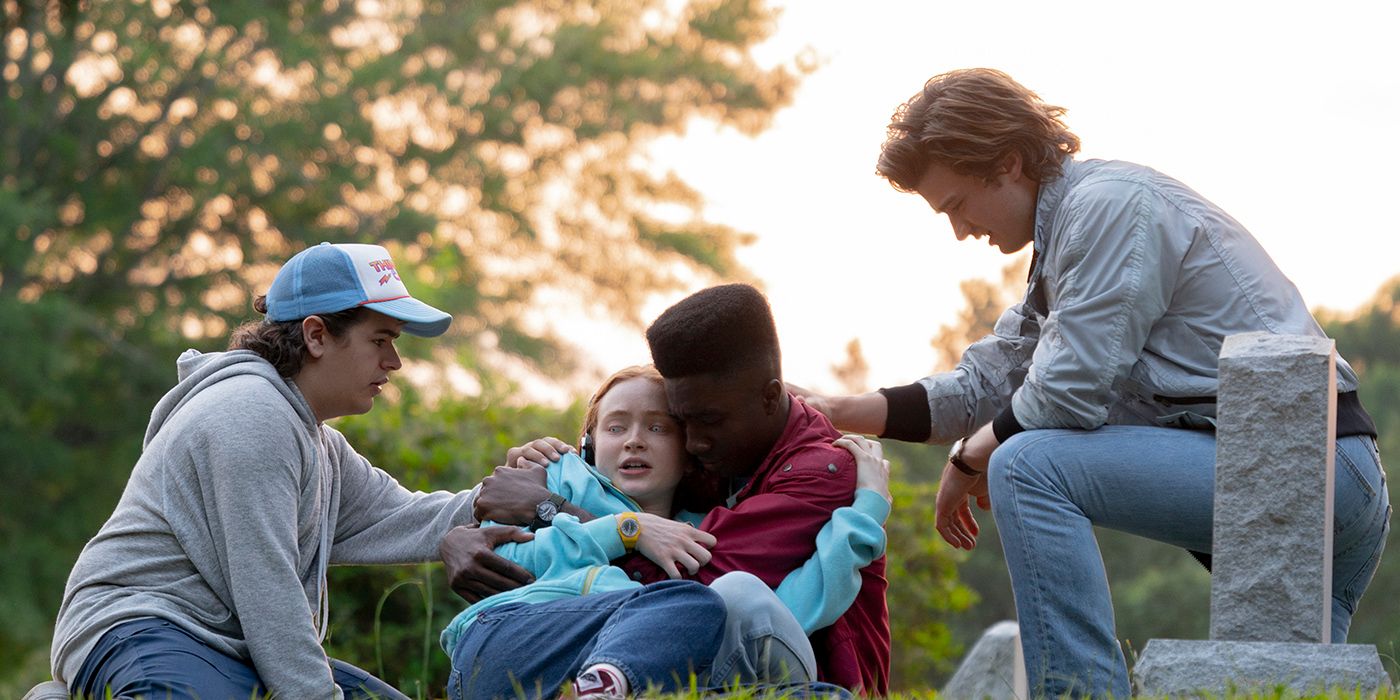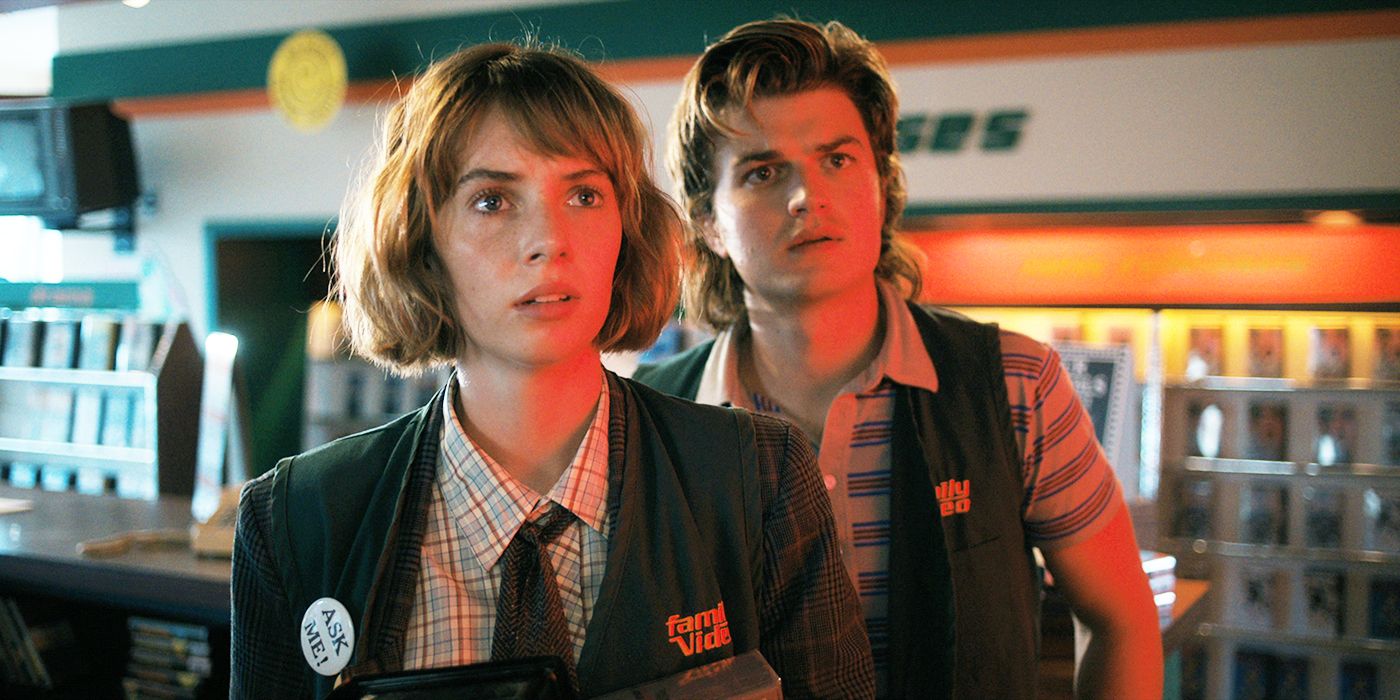Editor's Note: The following contains Stranger Things Season 4 spoilers.In its own unique way, now more than ever, Stranger Things is firmly in the horror genre. One thing that horror often ignores are the after effects of a character finding themselves in a horror situation. Stranger Things Season 4 is making quite an effort to explore this, and it makes it clear that this series knows that horror doesn’t end when the protagonist survives and the credits roll. Stranger Things made a vital choice when it acted to explore what it’s like to endure horror movie scenarios and come out on the other side. Suffering doesn’t end when the event is over. So, how does Stranger Things’ fourth season explore what it really means to survive?
It’s often easy enough for viewers to enjoy the horror genre without worrying too much about how the characters will cope with the emotional baggage that’s inspired by surviving the central event. In fact, that rarely ever enters into it. The goal is simply for the character to survive. Once the character escapes the life-threatening situation, the goal is completed, and the story is over. But, that’s not how survival really works in real life. When it comes to experiencing a traumatic event, after is often just as bad as during, and sometimes it’s even worse.
Stranger Things is a uniquely long form piece. The series’ run has spanned years, and this is reflected in the story, as well. Viewers are watching the main characters grow up and experience all the changes that come along with working one’s way through adolescence. Because of this, Stranger Things has both challenges and advantages that normal horror movies don’t have. Audiences see the before, during, and after of the characters’ run-ins with horror; not just the beginning. As such, the show has had a choice of whether they want to confront the aftermath head on or disregard it. This is ultimately a question of how realistic the series strives to be. Stranger Things certainly isn’t entirely beholden to naturalism, but when it comes to the emotional cores of its characters, the series often equips them with realistic human feelings and emotions. This is a lot of what makes them beloved. And, despite the many different aspects this series has to offer, the depth and likability of its characters makes up much of what keeps viewers coming back.
Allowing these characters to breathe and emote naturally after experiencing trauma works in service of this; it builds better emotional journeys and backstories, creates stronger relatability, and makes the characters feel whole. As the overarching Stranger Things story progresses, the narrative leaves more and more characters in its wake that have been traumatized by the myriad tragedies in Hawkins. The majority of these characters are children. To its credit, Stranger Things has never shied away from following the emotional aftermath of disasters. Barb’s parents appeared in the season after her death; Will (Noah Schnapp) dealt with the repercussions of his time in the Upside Down; Joyce (Winona Ryder) struggled to let Will live a normal life after he was returned to her in fear of it happening again. But, Season 4 takes things a step further; it doesn’t simply address the trauma following the horrific events; it treats the trauma, itself, as another horrific event.
The most simple and unadulterated version of this is watching Max (Sadie Sink) deal with life after watching her brother die. She’s withdrawing, struggling socially and academically, and can’t seem to shake her fear and sadness. Over the course of the season, she’s able to open up about her feelings toward Billy (Dacre Montgomery) in a very honest and multifaceted way. She’s guilty for her part in his death; she feels strange about their strained relationship when he was alive; she misses what he brought to her life while acknowledging that it could have been more. These feelings are all very real.
Monsters appearing from another dimension aren’t as real. Yet, this season hasn’t shied away from addressing trauma in this aspect of the show, as well. Each season has its own monster(s) and Vecna is, in many ways, trauma personified. Vecna uses peoples’ past trauma to lure his prey. He's like the physical embodiment of trying to use the saying "what doesn't kill you makes you stronger" to cope. And, then he actually kills you. Trauma is embeded into the new monster; showing that surviving these situations can be a horror movie scenario in themselves.
The notion that trauma is, in a way, its own character this season isn’t exactly subtle or difficult to detect. But, when Victor Creel (Robert Englund) enters, it becomes clear that trauma’s presence in this season is more of a question than a statement. When Nancy (Natalia Dyer) and Robin (Maya Hawke) visit infamous murderer, Victor Creel, in prison, this question unfolds in an unexpected way. Viewers likely think they know what to expect as Nancy and Robin approach Victor’s cell. It feels like a scary horror scene is imminent. And, a lot of this scene is certainly scarring and intense. But, Victor doesn’t present Nancy, Robin, and the audience with a brutal murderer. Instead, he seems to be a man who’s had everything taken away from him, and the pieces haven’t been put back together since.
Nancy and Robin are there to get information, so they ask what it felt like to “survive.” Victor presents the idea that to him, “surviving” isn’t all it’s cracked up to be. He reveals that he gouged his own eyes out in a failed suicide attempt. He argues that in the wake of his family’s death, he hasn’t really ‘survived’ just because he is still alive. Living with trauma can feel a lot like being trapped. Victor isn’t only in a literal prison that he doesn’t belong in. He’s also in the prison of his mind being forced to remember what he and his family have been through with no proper methods or help to cope or recover. For Victor, the remedy for the event he endured wasn’t to “survive” in the traditional, horror movie sense. In his view, the only way to overcome it was to not “survive.”
Stranger Things has always married darkness with a kind of sweet nostalgia. But, exploring the question of what it means to survive a traumatic event is a level of darkness that is unprecedented in the series. Season 4 isn’t shaping up to be the darkest season yet because it’s found its scariest monster in Vecna. Rather, its darkness comes from acknowledging what it really means that these characters are having these experiences. The exploration of these ideas isn’t just a thoughtful and welcome addition to Stranger Things. But, understanding what getting through things like this really means and what “getting through” it even looks like is so rare and welcome in the horror genre, as a whole.




